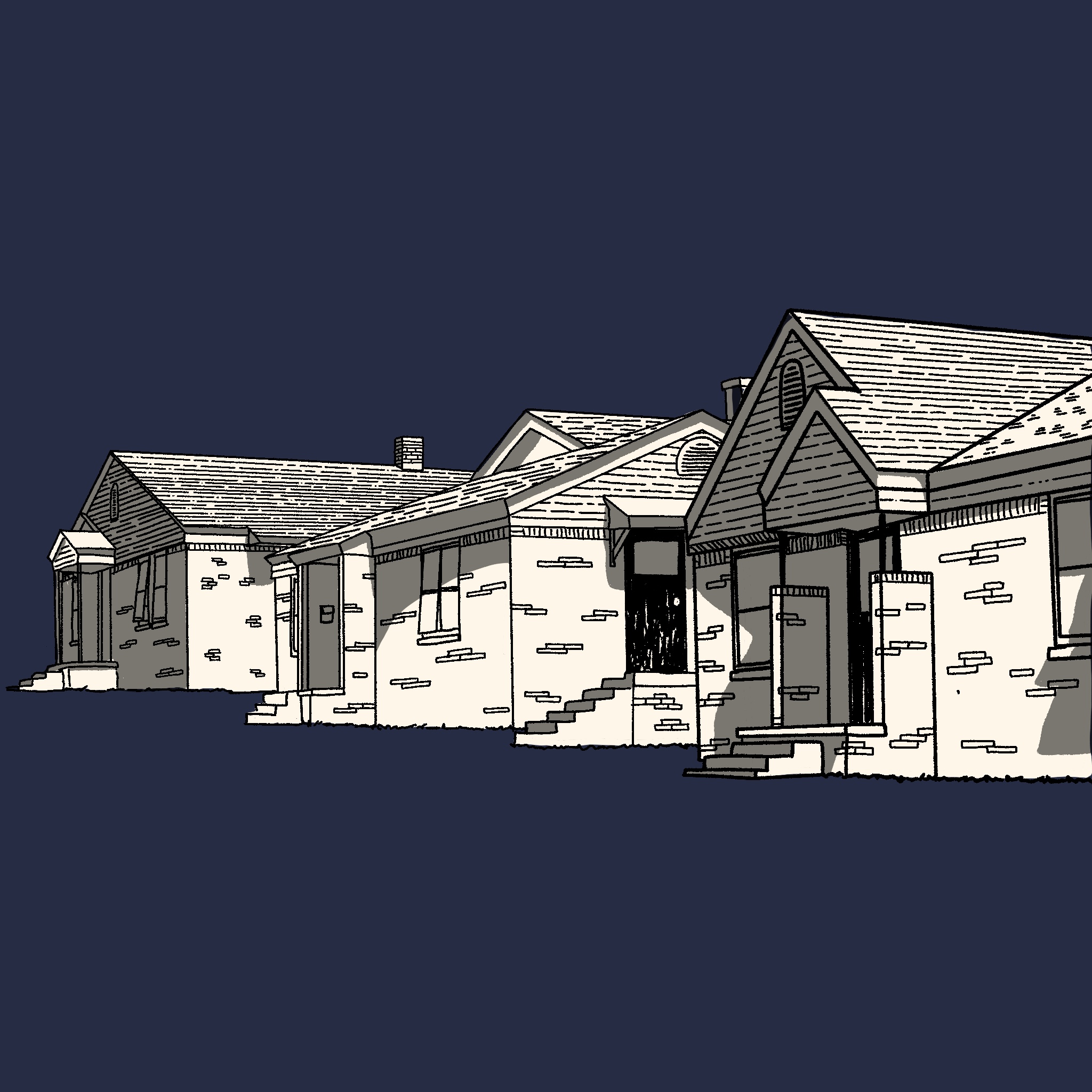Inflation and climate change are pushing up Americans’ energy bills, adding to low-income consumers’ financial stresses.
According to the US Department of Energy (DOE), low-income households spend 9% of their income on energy expenses, compared to the 3% that higher-income households spend.
In February and early March, a US Census Bureau household pulse survey estimated 8% of Americans reduced or went without household necessities so they could pay an energy bill almost every month. Of those surveyed, 19% said they were unable to pay at least one of their energy bills in the past 12 months.
In many communities, although utility assistance is available from government and nonprofit sources, housing advocates say there’s not enough of it.
At the Homeless Alliance in Oklahoma City, Executive Director Dan Straughan and Chief Housing Officer Tara Ryan said utility assistance has historically been a large, unmet need.
Utility bills aren’t just straining people with very low incomes, Straughan said: “Everybody that’s (earning) 80% or less of the (area median income) is struggling with their utilities, and because for renters that can cause you loss of your housing, that’s going to have an impact on the social service system in Oklahoma City in the coming months and years.”

Many landlords evict renters if a utility company disconnects their electricity service for nonpayment, and some federal housing assistance programs require evictions after cutoffs. Tenants who pay rent using Section 8 housing choice vouchers from the US Department of Housing and Urban Development can lose their vouchers if a utility company disconnects their power.
Energy bills sometimes rise after damage from weather events
In some cases, climate hazards end with energy consumers paying higher electric bills.
In 2021, a winter storm knocked out the power to thousands of Oklahomans. Some energy customers in Oklahoma City were without electricity for about two weeks.
After the storm, Oklahoma utility companies owed billions of dollars for natural gas. With support from state lawmakers, the Oklahoma Corporation Commission approved $3 billion worth of bonds to cover the storm costs for Oklahoma Gas and Electric Company (OG&E), Oklahoma Natural Gas, Public Service Company of Oklahoma and Summit. Because of the bonds, energy customers are projected to pay more than $157 million in fees and other costs, The Oklahoman reported last year.
In connection with OG&E’s bond, the corporation commission approved a monthly fee of about $2 to its customers.
The fees and other rate hikes have made it harder for low-income people to cover their electric bills.
“Our clients struggle as it is to get those utilities paid,” Ryan said. “A lot of them are on fixed income or Section 8 vouchers with no income and a very small utility allowance, so any increase in utility costs are going to be a struggle for our clients.”
[ Read more: Camping ban case to be heard in Supreme Court ]
On Monday, Corporation Commissioner Bob Anthony called for an audit of the utility companies’ bonds, calling a previous, one-page report on bond spending “ludicrous, pitiful, farcically inadequate and another attempt at whitewash and cover-up,” The Oklahoman reported. In a column he wrote earlier this year, Anthony said the bonds now would cost customers more than $5 billion, about $2 billion more than the initial cost of the bonds.
“In my opinion,” he wrote, “it is the worst financial abuse of Oklahoma ratepayers in more than 30 years, and the public has a right to know the truth about it.”
OG&E charges deposits to new and current customers who miss payments
Aside from rate hikes and fees stemming from bonds, energy companies might charge deposits that pose a barrier to housing.
In 2022, The Frontier and Curbside Chronicle, a street paper published by the Homeless Alliance, reported that Oklahoma utility companies often charge deposits to customers with late payment histories before setting up service.
OG&E charges new customers deposits if they have made more than two late payments in the past 12 months or previously received a service cutoff. The deposits are based on two months of the previous resident’s average energy use and can cost hundreds of dollars.
According to OG&E’s deposits policy provided by a company spokesperson, the utility also requires current customers to pay new deposits or add to their deposits sometimes. Customers may owe new deposits if they make two late payments within 12 months or if their service is disconnected for nonpayment, the policy says.
[ Read more: HUD hasn’t inspected some subsidized properties for a decade or longer, agency data says ]
How community solar projects could reduce low-income consumers’ energy costs
Solar energy helps offset electricity costs, but it can be difficult for low-income consumers to access. In 2022, just 2% of community solar capacity was designated for low-income households, according to the National Renewable Energy Laboratory.
Rooftop solar projects are usually out of reach for renters, who don’t own the roofs of their homes and can’t make changes to them. Installation costs, which average about $19,000, are also a barrier for lower-income households.
One way renters can access solar energy is through community solar programs that are available in about 40 states. People who subscribe to a community solar program buy or lease a share of a solar project. Then they typically receive a credit on their electric bill for their share of the electricity the system generates.
“By utilizing solar deployment to drive down their energy burdens, (community solar is) a way to democratize or lower energy costs to households that really, truly need it the most,” said Nicole Steele, workforce and equitable access program manager for DOE’s Solar Energy Technologies Office.
How to vet a community solar program—and make sure you’ll save money
A report from the National Consumer Law Center cautions that some community solar programs aren’t designed with low-income consumers in mind or may present consumer rights issues.
“You quickly realize that not all community solar programs are built the same way,” said Berneta Haynes, a senior attorney for the National Consumer Law Center and author of the report. “Some do not guarantee meaningful bill savings or they guarantee too much, and there’s not really anything there to deal with the outcome when those savings don’t materialize.”
[ Read more: How rental assistance programs have evolved during the pandemic ]
Haynes recommends people considering a community solar program check their contracts before signing for excessive fees, including fees to leave the program. She added that consumers should be cautious of door-to-door sales offers for community solar programs.
“Door-to-door sales historically tend to be one of the main avenues through which people are targeted with predatory marketing, and particularly low-income folks,” Haynes said.
To verify a program provides bill savings, Steele said consumers should confirm expected savings are clearly stated in their contracts.
Some federally-funded solar initiatives require community solar programs to deliver a certain level of energy savings.
As part of the Inflation Reduction Act that Congress passed in 2022, the US Environmental Protection Agency (EPA) is awarding $7 billion in grants to cities, states and nonprofits to expand low-income communities’ access to solar energy. Projects funded through the Solar for All grants must guarantee electricity bill savings totaling at least 20% for participating households, according to the EPA.
Last week, DOE, the US Department of Health and Human Services and the National Community Solar Partnership launched a tool to help low-income households access solar energy. In Washington, DC, Illinois and New Mexico, administrators of the Low-Income Home Energy Assistance Program can use the Clean Energy Connector to match low-income households with community solar programs.
“It’s another safeguard to that household to know if they’re entering into a contract with a subscription manager that’s been connected with them through this program, they’ll see regular savings,” Steele said.
Connect with resources mentioned in this story
- Looking for utility assistance? Dial 211 to learn what’s available where you live
- In Oklahoma City: Learn more about the Homeless Alliance, how to get help and how to get involved
- Read the National Consumer Law Center’s report on community solar programs
Contact Streetlight editor Mollie Bryant at 405-990-0988 or bryant@streetlightnews.org. Follow her reporting by joining our newsletter.
Streetlight, previously BigIfTrue.org, is a nonprofit news site based in Oklahoma City. Our mission is to report stories that envision a more equitable world and energize our readers to improve their communities. Donate to support our work here.





